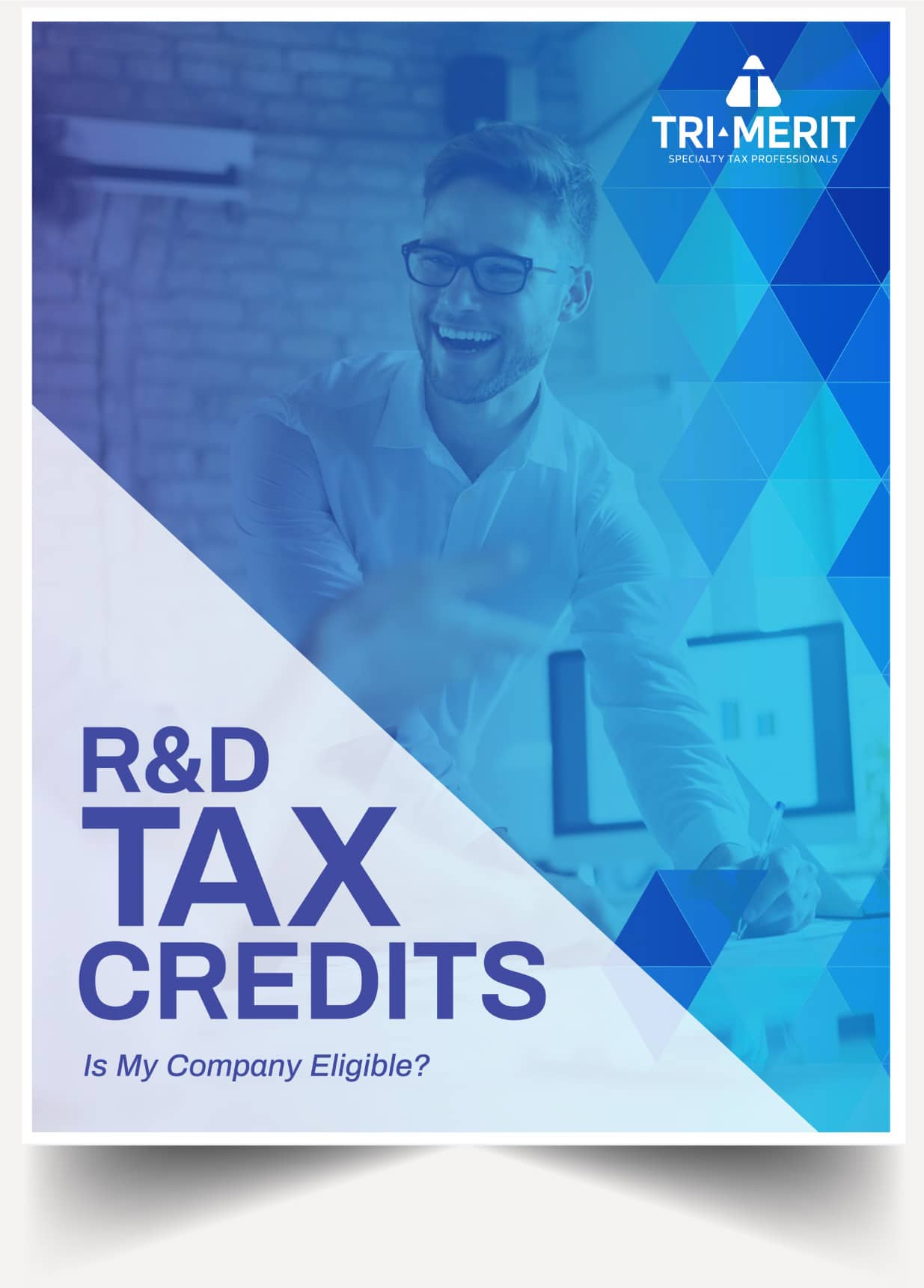By: Brett Barton, Director, Tri-Merit
Key Takeaways:
- Qualified expenses can be found within smaller components of larger projects
- The aggregate of these subset development expenses can add up to significant tax savings
- Understanding what to look for is critical in determining Qualified Research Expenses
Many companies choose to take advantage of the Research and Development Tax Credit (Internal Revenue Code Section 41) as a tax planning strategy and an incentive for investing in developing new or improved products or technologies. After determining your initial qualifications for the Credit with a specialty tax provider, the next step when working on a Research and Development tax credit study is to determine your company’s Qualified Research Expenses (QREs). QREs include:
- Compensation paid to employees who engage in qualified research.
- Certain supplies used in the conduct of qualified research.
- Contract research amounts paid to a third party to perform qualified research (limited to 65% of the qualified contractor costs incurred).
Further information on the definition of QREs can be found on the Tri-Merit insight: What Qualifies as an R&D Expenditure?
As with most sections of the IRS tax code, there are specific nuances and methodologies that need to be considered when claiming the credit. As outlined in R&D Tax Credit 4 Part Test: No Surprise Quiz Here, the R&D Tax Credit has a four part test to determine which activities are qualified for claiming the credit. The Qualified Research Expenses (QREs) come from those wage, supply, and contractor costs associated with these Qualified Research Activities (QRAs) that meet the IRS 4 Part Test.
A common misconception about the R&D Tax Credit is that an organization must take an all or nothing approach when determining which development projects meet the IRS 4 Part Test. It is often mistakenly assumed that if a project as a whole does not pass the IRS 4 Part Test, then the project is disqualified in its entirety. ‘
The reality is that there is the opportunity to take advantage of the Shrink Back Rule to increase the QREs captured from large scale projects that as a whole might not ultimately qualify as research and development. This Shrink Back Rule allows us to apply the 4 Part Test at the most significant subset of elements within a business component (product, process, computer software, technique, formula, or invention) that can satisfy the four parts of the test. Thus, the Shrink Back Rule gives us the ability to qualify activities and expenses within a large project, that as a whole may not meet the 4 Part Test, to include smaller, developmental components within the project that can meet the 4 Part Test.
In other words, the Shrink Back Rule applies to situations where a large-scale project, which may not be qualified, has smaller components which require significant improvements related to function, performance, reliability, or quality. The smaller “subproject” of a project can be used to meet the new or improved business component requirement part of the 4 Part Test. The development costs of the subproject can then be qualified and included in QREs.
Here is an IRS example to further explain:
Company X, a motorcycle engine builder, develops a new carburetor for use in a motorcycle engine. X also modifies an existing engine design for use with the new carburetor. Under the shrinking-back rule, the requirements are applied first to the engine. If the modifications to the engine when viewed as a whole, including the development of the new carburetor, do not satisfy the requirements, those requirements are applied to the next most significant subset of elements of the business component. If the next most significant subset of elements of the engine is the carburetor, the research activities in developing the new carburetor may constitute qualified research.
Conclusion
Determining qualified projects and activities for the R&D tax credit can be an overwhelming task. Without the knowledge or experience of everything that needs to be considered things may get missed or mischaracterized. If you or your clients are interested in the credit or need assistance navigating the credit specific nuances, we can help.
Brett Barton is a Director at Tri-Merit, a specialty tax provider that partners with CPAs and their clients to optimize R&D tax credits and other engineering-based incentives. For more than a decade, Tri-Merit has specialized in tax credits and incentives. The firm’s partners speak often at accounting industry trade shows and conferences to help educate the profession. Contact Brett at brett.barton@tri-merit.com | 847-595-0094.
We’re committed to your privacy. Tri-Merit Specialty Tax Professionals uses the information you provide to us to contact you about our relevant content, products and services. You may unsubscribe from these communications at any time.



